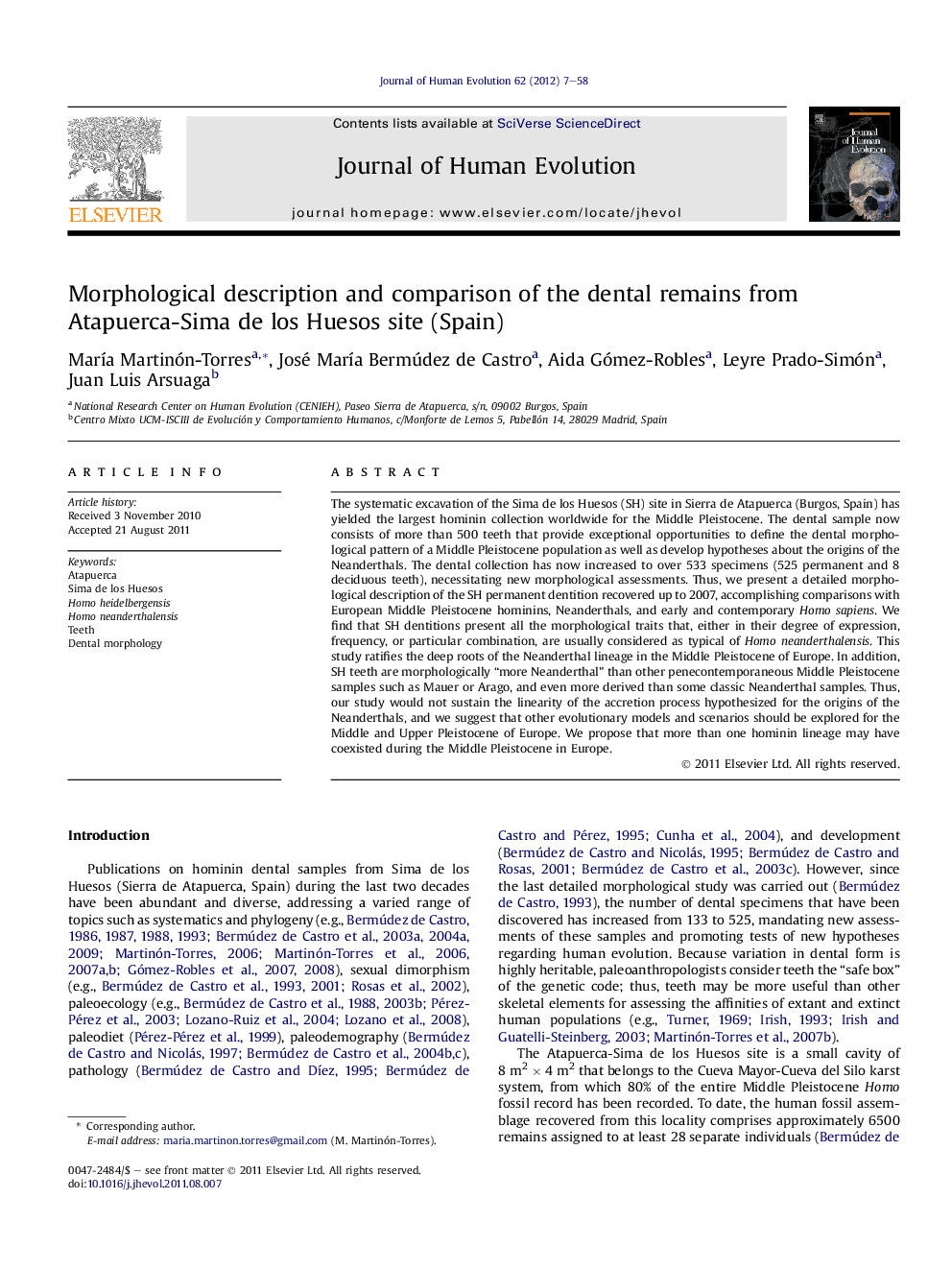| کد مقاله | کد نشریه | سال انتشار | مقاله انگلیسی | نسخه تمام متن |
|---|---|---|---|---|
| 4556326 | 1329471 | 2012 | 52 صفحه PDF | دانلود رایگان |

The systematic excavation of the Sima de los Huesos (SH) site in Sierra de Atapuerca (Burgos, Spain) has yielded the largest hominin collection worldwide for the Middle Pleistocene. The dental sample now consists of more than 500 teeth that provide exceptional opportunities to define the dental morphological pattern of a Middle Pleistocene population as well as develop hypotheses about the origins of the Neanderthals. The dental collection has now increased to over 533 specimens (525 permanent and 8 deciduous teeth), necessitating new morphological assessments. Thus, we present a detailed morphological description of the SH permanent dentition recovered up to 2007, accomplishing comparisons with European Middle Pleistocene hominins, Neanderthals, and early and contemporary Homo sapiens. We find that SH dentitions present all the morphological traits that, either in their degree of expression, frequency, or particular combination, are usually considered as typical of Homo neanderthalensis. This study ratifies the deep roots of the Neanderthal lineage in the Middle Pleistocene of Europe. In addition, SH teeth are morphologically “more Neanderthal” than other penecontemporaneous Middle Pleistocene samples such as Mauer or Arago, and even more derived than some classic Neanderthal samples. Thus, our study would not sustain the linearity of the accretion process hypothesized for the origins of the Neanderthals, and we suggest that other evolutionary models and scenarios should be explored for the Middle and Upper Pleistocene of Europe. We propose that more than one hominin lineage may have coexisted during the Middle Pleistocene in Europe.
Journal: Journal of Human Evolution - Volume 62, Issue 1, January 2012, Pages 7–58